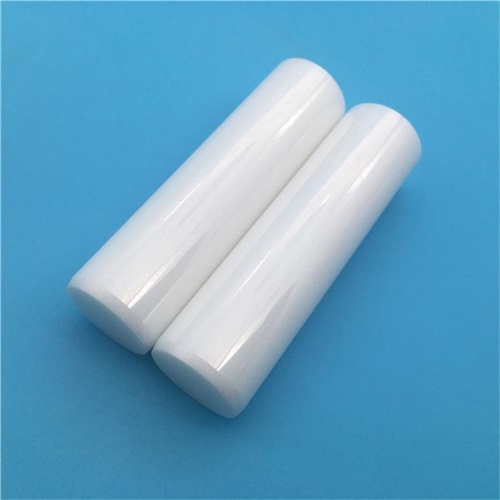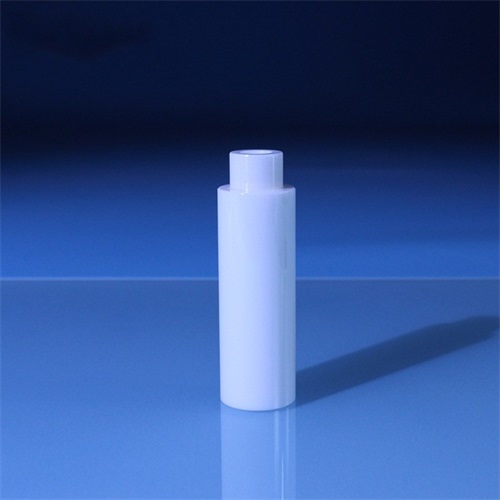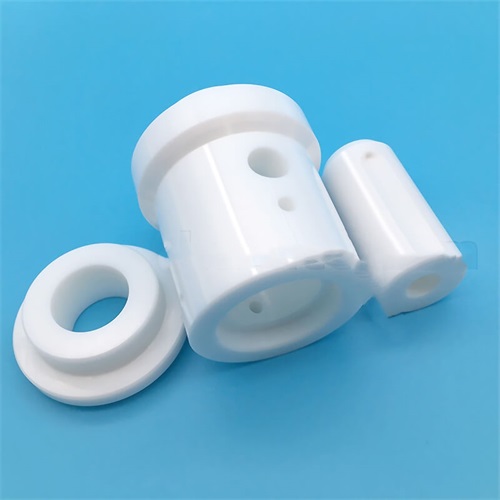Mirror polishing process of zirconia ceramic plunger
Zirconia ceramic plungers are widely used in key equipment in medical, food and beverage, chemical and petroleum fields due to their high hardness, excellent wear resistance, good chemical stability and excellent high temperature resistance. However, the high hardness and brittleness of zirconia ceramics make the polishing process face many challenges. This article will introduce the mirror polishing process of zirconia ceramic plungers in detail, including the application of traditional methods and advanced polishing techniques.
Necessity of Mirror Polishing of Zirconia Ceramic Plunger
Although zirconia ceramics themselves have excellent properties, their original machined surfaces still have certain roughness and minor defects at the microscopic level. These defects can cause a series of problems under the conditions of high-speed reciprocating motion of the plunger, high-pressure fluid transportation, and frequent contact with the seal, such as increasing the coefficient of friction, accelerating wear, and affecting fluid purity. Therefore, the mirror polishing process is crucial to improve the performance of zirconia ceramic plungers.

Full analysis of mirror polishing process
- Traditional grinding and polishing methods
The grinding and polishing of traditional zirconia ceramic plungers mainly adopts free abrasive. The specific steps include: - Blank cutting and preliminary forming: using a flat polishing machine, using an iron plate for roughening treatment to remove most of the processing allowance.
- Fine polishing: replace with a white cloth dipped in an abrasive paste for fine polishing. Under the relative movement of the white cloth and the ceramic surface, the abrasive in the abrasive paste produces a fine cutting effect on the ceramic surface, gradually reducing the surface roughness.
- Disadvantages: This method is inefficient. It usually takes 30 to 40 minutes for the white cloth polishing stage to achieve a mirror effect, and the processing efficiency is closely related to the toughness of the material.
(2) Advanced polishing technology
- Chemical mechanical polishing (CMP)
Chemical mechanical polishing uses the combined effect of corrosion and mechanical removal of polishing liquid to achieve polishing. The chemical substances in the polishing liquid chemically react with the surface of zirconia ceramics to form a softer reaction layer. At the same time, the polishing pad moves relative to the ceramic surface under a certain pressure to mechanically remove this reaction layer. CMP can effectively reduce surface scratches and defects and achieve an ultra-flat mirror surface, which is suitable for fields that require extremely high surface accuracy. - Ultrasonic polishing
Ultrasonic polishing puts the workpiece into a suspension containing abrasive and places it in an ultrasonic field. The high-frequency oscillation of ultrasonic waves causes the abrasive to produce high-speed, high-acceleration impact and micro-cutting on the surface of the workpiece, quickly removing the microscopic protrusions on the surface. This method is suitable for complex-shaped zirconia ceramic plungers and can reduce thermal damage during polishing to a certain extent. - High-speed centrifugal grinding and polishing with numerical control
With the help of numerical control high-speed centrifugal grinding equipment, the zirconia ceramic plunger and the special grinding medium are placed together in the high-speed rotating grinding chamber. Under the action of strong centrifugal force, the grinding medium impacts and rubs the surface of the ceramic plunger at an extremely high speed to achieve fast and uniform polishing. This method is extremely efficient and can process multiple plungers at one time, which is suitable for large-scale production needs. - Ultrasonic-assisted laser polishing
Ultrasonic-assisted laser polishing combines the advantages of laser polishing and ultrasonic vibration. Laser polishing melts the material through a high-energy-density laser beam, and the surface raised part fills the recessed part under the action of its own gravity and surface tension to achieve surface smoothness. Ultrasonic vibration periodically changes the focus position and spot diameter of the laser beam, reducing the flow caused by thermal capillary force and further improving the polishing effect. Experiments show that ultrasonic-assisted laser polishing can reduce the surface roughness of zirconia ceramics from 2.479 μm to 0.477 μm, with a reduction rate of 80.7%.
(III) Selection of polishing fluid
The choice of polishing solution is crucial to the polishing effect. The traditional silica sol polishing solution has low efficiency in alkaline environment and is easy to harden during the polishing process. A new type of high-efficiency mirror zirconia ceramic polishing solution controls the electric double layer properties of the oxide ceramic surface through a suitable pH value, effectively hydrating and softening the hard ceramic oxide surface. This polishing solution has a polishing efficiency of up to 10 μm/h or more in the pH range of 1.5 to 4.5.

IV. Industry application examples of mirror polishing process
(1) The medical and pharmaceutical industry
In the plunger pump of pharmaceutical equipment, the surface of the mirror-polished zirconia ceramic plunger is as smooth as a mirror, which eliminates the possibility of drug residues and microbial growth, and ensures the accuracy and stability of the dosage of the infusion, filling machine and other equipment when transporting the liquid medicine.
(2) Food and beverage processing
In the food and beverage production process, the requirements for equipment hygiene are almost strict. The surface of the mirror-polished zirconia ceramic plunger is easy to clean and disinfect, avoiding the adhesion of impurities and bacteria, and meeting food-grade hygiene standards.
(3) Chemical and petroleum industries
In chemical high-pressure pumps and oil extraction equipment, the mirror polishing process improves the corrosion resistance of the plunger, making its surface less susceptible to chemical attack. At the same time, the low-friction mirror surface reduces energy loss in high-pressure environments and prolongs the maintenance cycle of the equipment.

The mirror polishing process of zirconia ceramic plungers is a key technology to improve their performance and expand their application fields. Although the traditional grinding and polishing method is simple, the efficiency is low. Advanced polishing technologies such as chemical mechanical polishing, ultrasonic polishing, numerical control high-speed centrifugal grinding and polishing, and ultrasonic-assisted laser polishing can significantly improve polishing efficiency and surface quality. In industries with high hygiene and precision requirements such as medical, food and beverage, chemical and petroleum, mirror-polished zirconia ceramic plungers have shown excellent performance and great application potential.
PREVIOUS:The advantages of alumina ceramic flanges
NEXT:What industries can the sealing effect of ceramic flanges be applied to
CATEGORIES
LATEST NEWS
- Petrochemical ceramic injec...
- Zirconia Ceramic Rod Custom...
- High-temperature resistance...
- What is the wear resistance...
- What is the hardness of cer...
- Aluminum oxide ceramic cust...
- What are the main aspects o...
- What are the mechanical pro...
- Thermal properties of zirco...
- What properties should be c...
